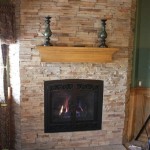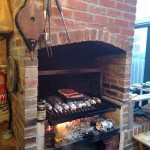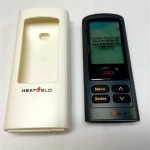Decoding Cast Iron Fireplace Serial Numbers: A Guide to Identification and History
Cast iron fireplaces represent a significant piece of history, often serving as focal points in both grand estates and modest homes. Their intricate designs and durable construction have allowed many to survive for generations. As a result, understanding how to identify and date these fireplaces is crucial for collectors, homeowners, and historians alike. A key component in this process is the identification and deciphering of cast iron fireplace serial numbers.
Serial numbers, along with other markings found on a cast iron fireplace, offer valuable clues about its origin, manufacturer, and production period. The presence and location of these numbers can vary significantly depending on the manufacturer and age of the fireplace. While not all cast iron fireplaces bear serial numbers, the presence of one is a significant asset in determining its provenance. This article delves into the complexities of cast iron fireplace serial numbers, providing guidance on their discovery, interpretation, and the broader context they offer in appreciating these historical artifacts.
Finding Serial Numbers on Cast Iron Fireplaces
The first step in identifying a cast iron fireplace is locating its serial number. This can be a challenging task, as the placement is not standardized. Manufacturers employed various locations, often choosing spots that were discreet or less likely to be affected by wear and tear. Common locations to inspect include the back of the firebox, the legs or feet, the hearth area, and the underside of the mantelpiece. A thorough examination, including using a flashlight and potentially a mirror to access hidden areas, is often necessary.
The serial number may be cast directly into the iron as part of the molding process, or it may be stamped on after production. Cast numbers are typically raised and easier to discern, while stamped numbers may be fainter and require careful cleaning to reveal. Rust and layers of paint can obscure these markings so gentle cleaning with a soft brush and mild cleaner is recommended. Avoid aggressive cleaning methods that could further damage or erase the markings.
It's important to note that not all markings on the fireplace are serial numbers. Some might be pattern numbers, foundry marks, or patent dates. These markings, while not directly identifying the specific fireplace, can still provide valuable information about its manufacturer and approximate age. Keep detailed notes and photographs of all markings found, as this information can be crucial in the identification process.
Pay close attention to the style of the numbers or letters used. Early fireplaces often used more ornate or stylized fonts. The presence of specific characters or abbreviations can also offer clues. For example, the term "Patented" or the abbreviation "PAT" often indicates a design patent date, which can help narrow down the production timeframe.
Decoding Serial Numbers: What They Reveal
Once a serial number is located, the next step is to understand what it represents. Unfortunately, there is no universal database or centralized record of cast iron fireplace serial numbers. Many manufacturers' records have been lost or destroyed over time. Therefore, decoding a serial number often requires research and comparison with known information about different manufacturers.
The structure of the serial number itself can provide clues. Some manufacturers used sequential numbering systems, allowing for a relatively precise estimation of the production date. Others used alphanumeric codes, incorporating letters to indicate the model or style of the fireplace. The length of the serial number can also be indicative of the manufacturer or era. Earlier fireplaces often have shorter serial numbers than later models.
Online resources, such as antique fireplace forums and historical society websites, can be valuable assets in the decoding process. These platforms often have communities of knowledgeable collectors and historians who may be able to offer insights based on their experience or access to historical records. When seeking information from online sources, it's important to critically evaluate the information and compare it with other sources to ensure accuracy.
Books and publications on antique fireplaces can also provide valuable information about specific manufacturers and their numbering systems. These resources often include illustrations and descriptions of common markings and serial number formats. Local historical societies and libraries may have access to these types of publications.
If a serial number can be linked to a specific manufacturer, further research into that company's history can reveal more about the fireplace's production date and original style. Manufacturers' catalogs, if available, can be particularly helpful in identifying the specific model of the fireplace and understanding its original appearance.
The Importance of Contextual Clues
While serial numbers are important, it's crucial to consider other contextual clues when identifying a cast iron fireplace. The design and style of the fireplace, the type of iron used, and the presence of specific decorative motifs can all provide valuable information.
The prevailing architectural styles of the period in which the fireplace was made often influence its design. For example, Victorian fireplaces typically feature elaborate ornamentation and intricate castings, while Art Deco fireplaces tend to have simpler, more streamlined designs. Researching the architectural styles that were popular during different periods can help to narrow down the fireplace's age.
The type of iron used can also be an indicator of age and quality. Early cast iron fireplaces were often made with a coarser grade of iron than later models. The presence of specific alloys, such as manganese or nickel, can also provide clues about the origin of the iron.
Decorative motifs, such as floral patterns, geometric designs, or classical figures, can also provide clues about the fireplace's origin and style. Some manufacturers were known for using specific motifs, which can help to identify their products. Researching the history of decorative arts can provide valuable insights into the symbolism and meaning of these motifs.
The fireplace's location within the building can also offer contextual clues. The style and design of the fireplace should be consistent with the overall architectural style of the building. If a fireplace appears to be out of place or mismatched with the building's other features, it may have been added later.
Original documentation associated with the building, such as architectural plans or historical photographs, can also provide valuable information about the fireplace. These documents may include details about the fireplace's manufacturer, style, and original cost.
Examining the fireplace for signs of repairs or alterations can also provide clues about its history. The presence of mismatched parts or evidence of welding can indicate that the fireplace has been modified over time. These modifications can obscure the original design and make identification more difficult.
By combining information from the serial number with other contextual clues, it's possible to develop a more complete understanding of the fireplace's history and provenance. This information can be valuable for collectors, homeowners, and historians who are interested in preserving and appreciating these historical artifacts.
In conclusion, the process of identifying and dating cast iron fireplaces is a complex but rewarding endeavor. Serial numbers offer a valuable starting point, but they must be considered in conjunction with other contextual clues. By carefully examining all available evidence, it's possible to unlock the history of these fascinating objects and appreciate their significance in the broader context of architectural and social history.

How To Locate Your Fireplace Or Stove Serial Number

How To Locate Your Fireplace Or Stove Serial Number
What Does Serial Number Look Like Hearth Com Forums Home

Original Cast Iron Fireplaces Look Magnificent Vintage And Architectural
What Does Serial Number Look Like Hearth Com Forums Home

Original Cast Iron Fireplaces Look Magnificent Vintage And Architectural

Vintage Heavy Duty Cast Iron Ball Fireplace Andirons Square Nut Bolt 1919 Date

Napoleon Arlington Direct Vent Gas Stove

Empire Spirit 28 25 000 Btu Porcelain Black Finish Intermittent Pilot Control With On Off Switch Natural Gas Vent Free Cast Iron Medium Stove
Here S How To Find Your Model And Serial Number Heatilator








